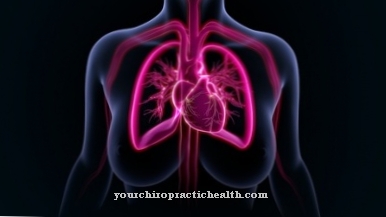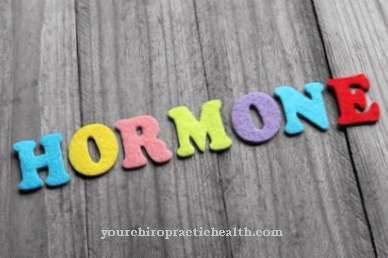Pain affects the human body not only acutely, but also in the long term. In particular, pain that occurs intensely is Pain memory saved. They change nerve cells in the brain and affect genes, which can lead to chronic pain for no apparent cause.
What is pain memory

When the pain memory arises, complex processes are in the foreground. If not treated, pain stimuli can leave traces in the body. These traces are stored in the spinal cord and in the brain. Thus, pain primarily affects the nervous system.
Persistent pain makes the affected areas more sensitive to stimuli even after they have healed. This can be noticeable, for example, through hyperalgesia. The physician describes an excessive sensitivity to pain as such. On the other hand, there can also be pain with stimuli that would normally have been perceived as harmless or not at all painful. The pain memory is mainly activated when a stimulus has led to pain for too long.
Primary hyperalgesia is common in severe pain. After a fracture, the surrounding areas are more sensitive to pain and tend to hurt even with the slightest touch. This pain is basically a protective mechanism of the body. The area must be spared in order to be able to heal properly.
The development of pain memory can be compared to training effects. To put it simply, muscles continue to develop through repeated stimuli. The same happens with synapses that transmit pain stimuli. They become overly sensitive and can become independent over time.
In pain memory, a distinction is made between explicit memory and implicit associative memory. With the former, the strength and type of former pain are stored on the surface. The second deals with the sensitization of the periphery and the associated conditioning processes. The trace that leads to the reconstruction of synapses can be made visible with imaging methods.
Function & task
The biological sense of pain is to recognize chemical or mechanical stimuli in good time. If possible tissue-damaging stimuli can be recognized, the person tries to prevent the stimulus in order to alleviate or avoid pain. Nerve cells and their offshoots are responsible for recognizing potential dangers, passing the stimuli on to the brain and thus preventing the pain. The cells responsible for this are called nociceptors.
One of the tasks of the pain memory is to continue to protect the affected areas shortly after the injury. In this way the healing process is accelerated and the injuries can heal better.
The body's sensitization processes are best examined in the spinal cord. The current results come from experiments with mice and rats. Synapses, which are responsible for the transmission of pain, change with persistent pain. The affected synapse becomes larger and the transmission rate and intensity stronger. This process is also known as long-term potentiation.
According to the latest findings, persistent pain also affects the genetics of cells. The body forms new protein chains, which changes the cell membrane. This change leads to faster response to stimuli. This can lead to recurring or persistent pain.
You can find your medication here
➔ Medicines for painIllnesses & ailments
The pain memory is therefore not only responsible for pain that becomes chronic, but can also lead to phantom pain. The pain is released from its original cause. Stimuli are passed on to the brain without a corresponding signal. The consequences are, for example, permanent bad posture, as those affected try to relieve the painful area as much as possible. These relieving postures are triggered by pain and are originally intended to protect painful and diseased areas. In this case, however, said relieving postures quickly lead to a lack of exercise or real pain, since an unnatural posture is always adopted.
Depending on the duration, this can also lead to poor posture in the area of the skeleton. In addition, there can be changes in the entire nervous system. Depending on the case, pain may occur in areas far from the original trigger. The pain sensitivity of the entire body increases and the person concerned is constantly tense. This tension leads to additional muscle spasms.
In some cases, it is hardly clear where the incorrect loads come from. Many patients with chronic pain seek medical advice who is at a loss as to the cause of the pain. Organic causes can often not be found in this case. If the patient does not remember the triggering event or does not recognize the connection and inform his doctor, it becomes difficult.
The pain memory can, however, be erased again with a little work. This is what neurobiology tries to do. Movement and relaxation training is used to remedy the problems. In addition, psychotherapy is often advised in order to get trained, incorrect movement patterns back on the right track. In many cases, the difficulty lies in the fear of those affected. Fear of the pain prevents postures that could trigger the stimulus. Therefore, to overwrite pain memory, professionals from different disciplines must work together to achieve the desired results.





.jpg)



















.jpg)

.jpg)
